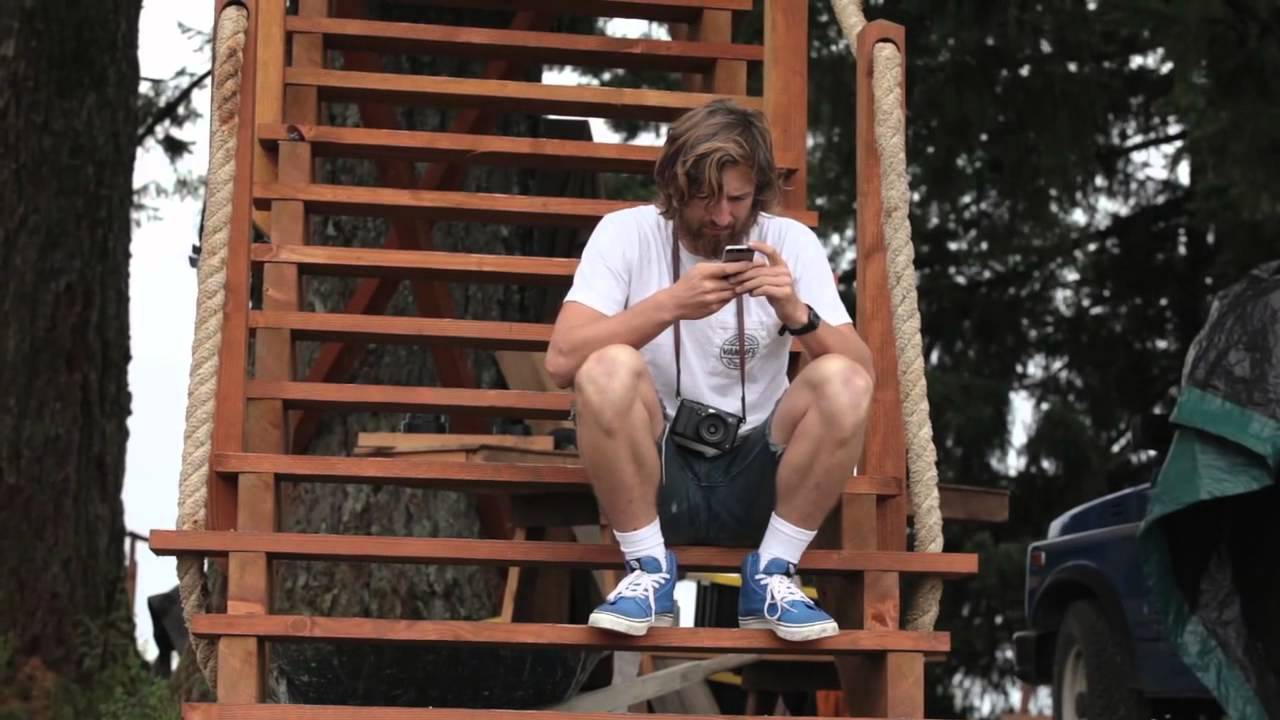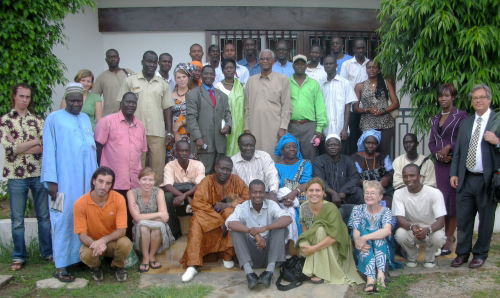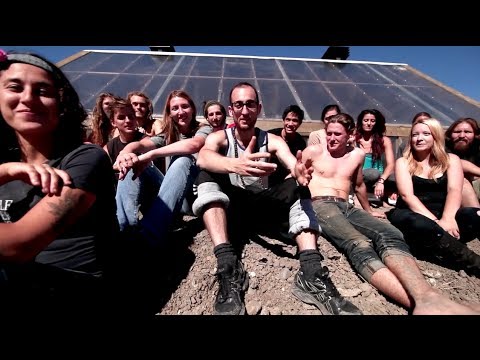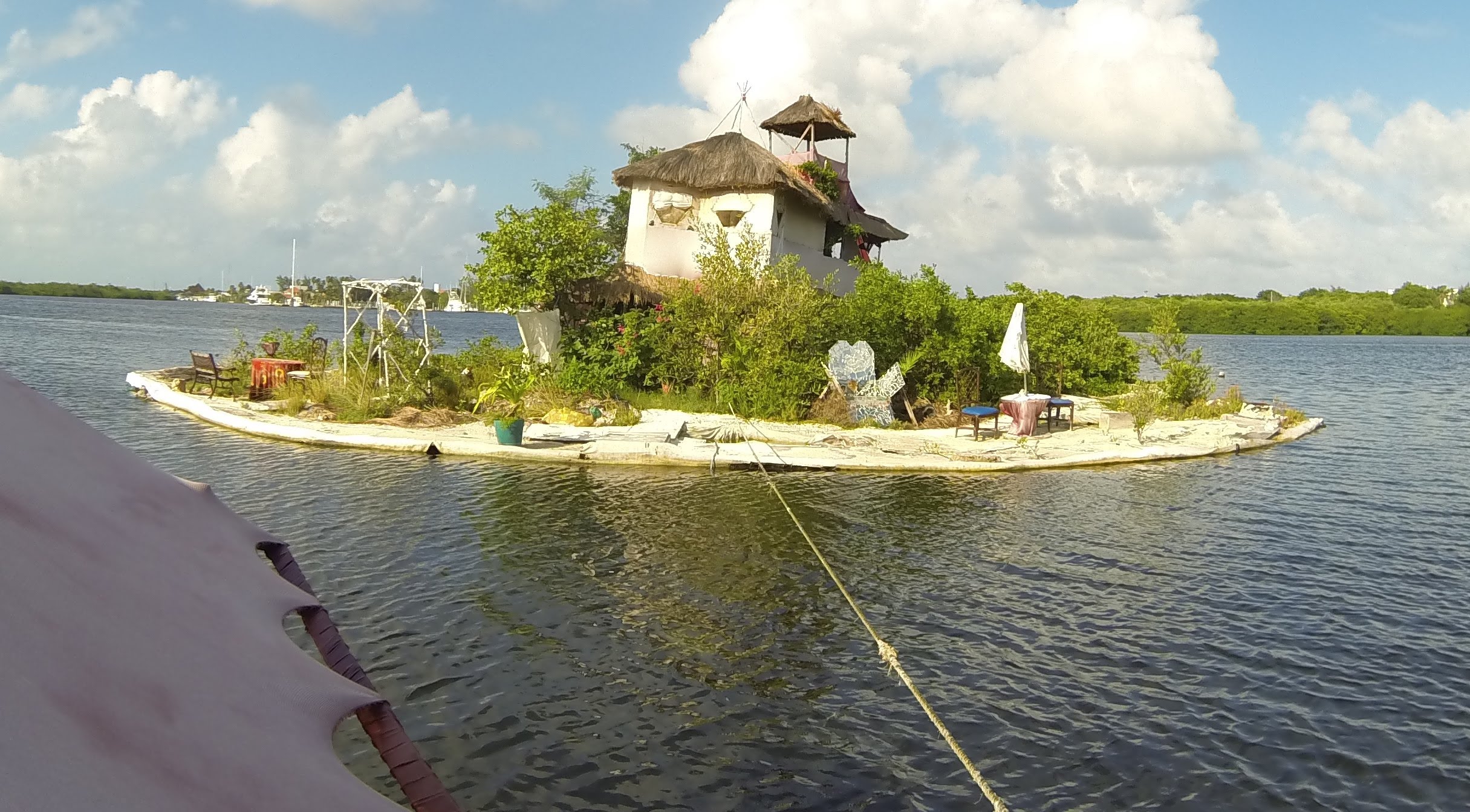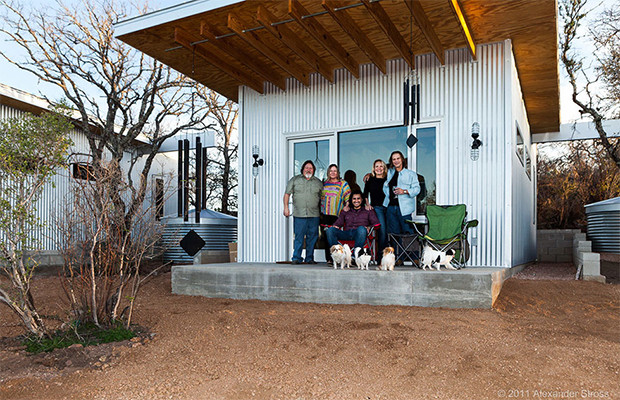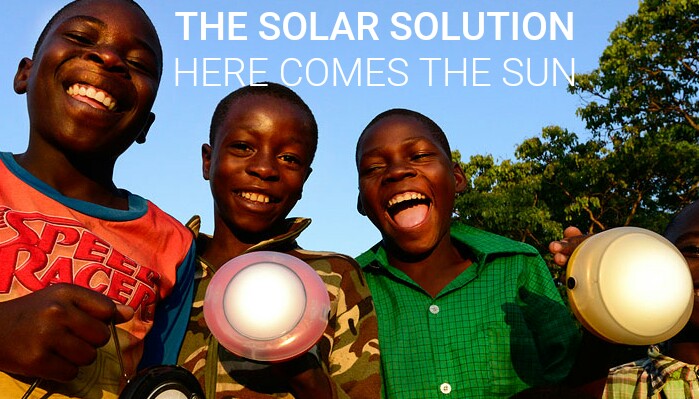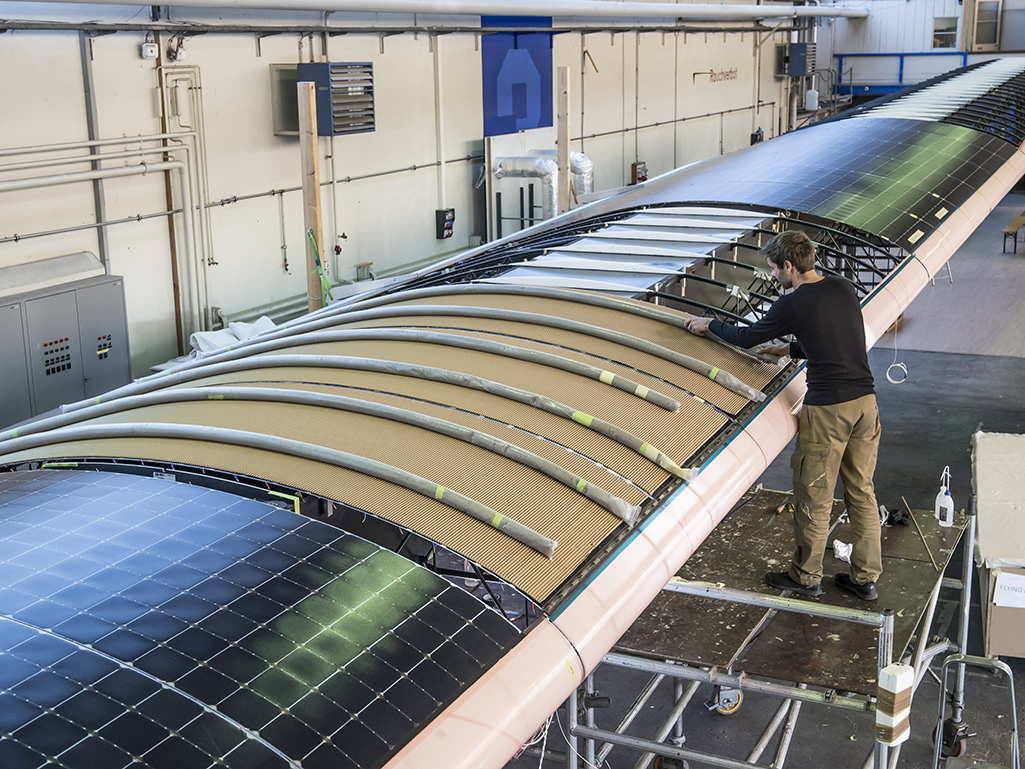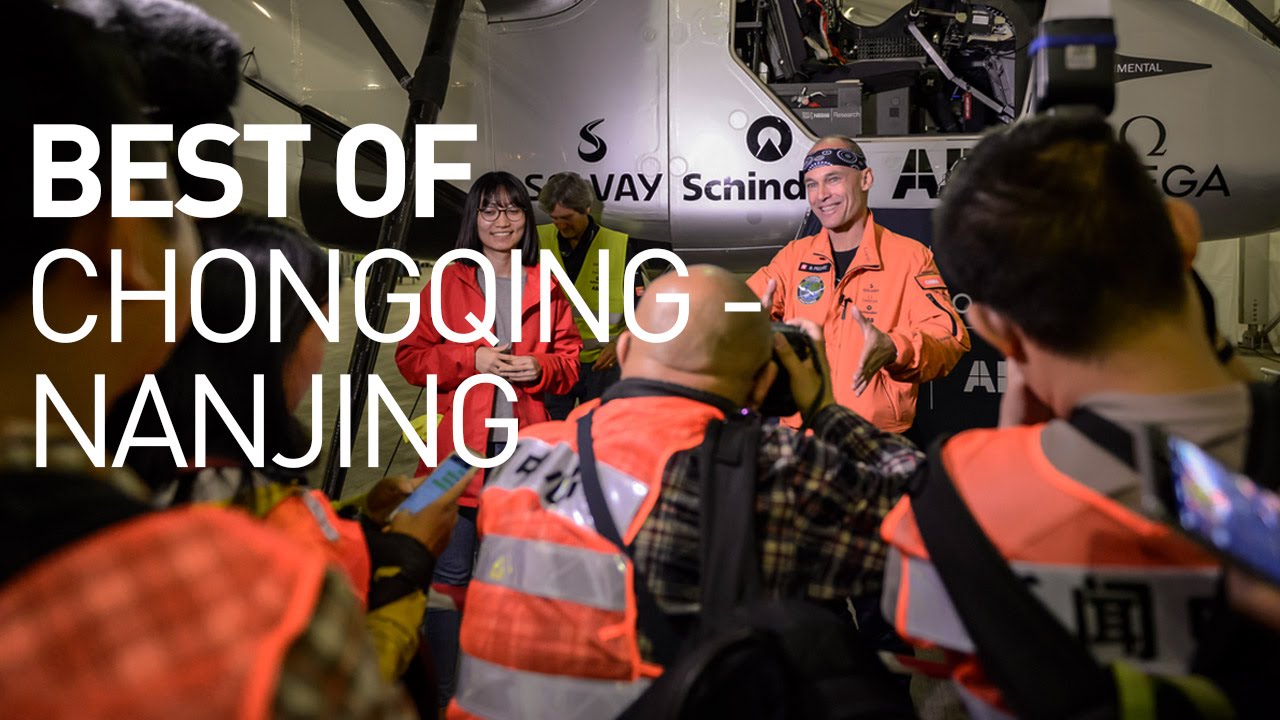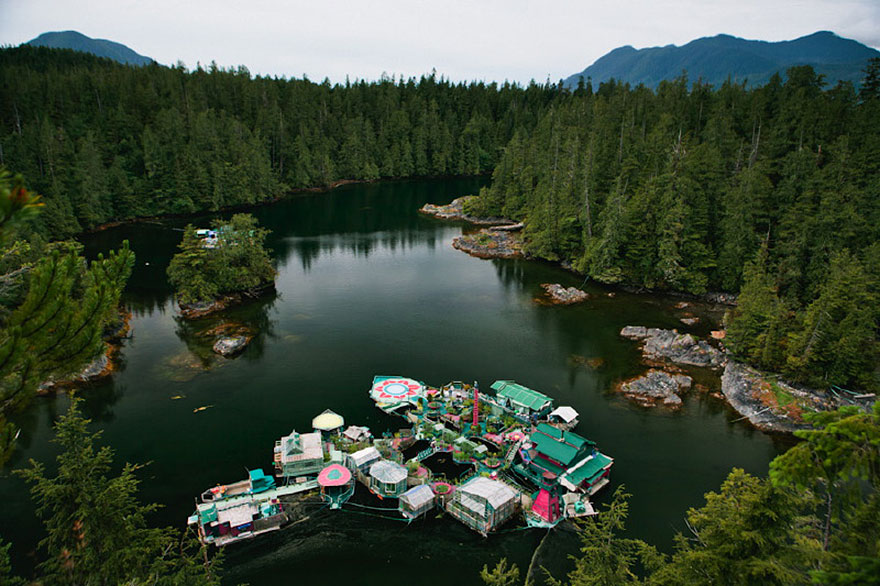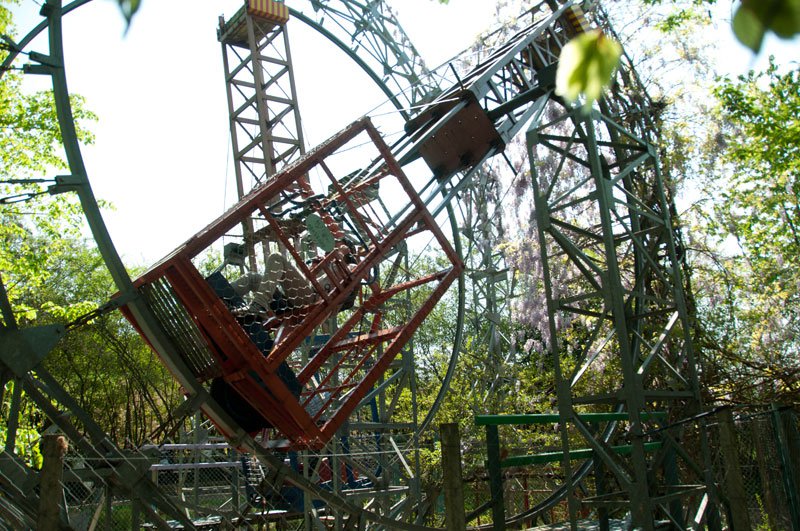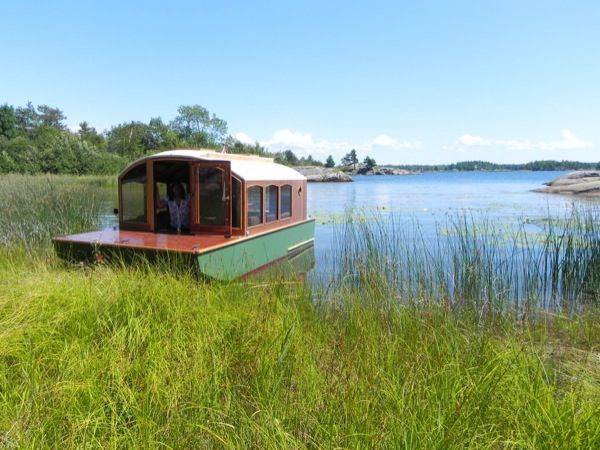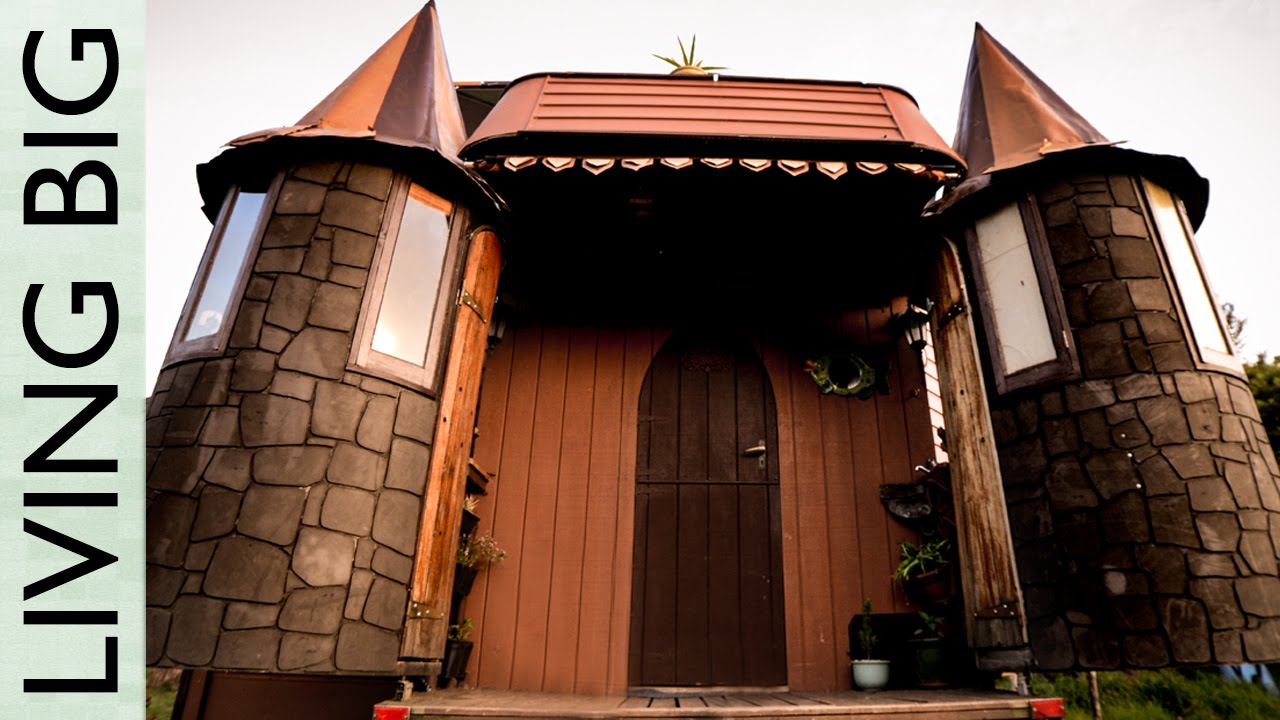Senegal Turning 14,000 Villages Into Ecovillages!
“You think there is just a desert and a tyrannical regime, with nothing happening on the ground. And then you go in, and find all these people doing fantastic work in their communities, like peace projects, environmental justice projects and community building. Suddenly, you have a totally different image and landscape emerging from a country.” (Source) These …
The Biggest Cleanup In Human History – Ocean Cleanup
The Ocean Cleanup project was sparked a few years back when teenager, Boyan Slat conceived an A-For-Effort design that went absolutely viral, until those mean online skeptics got hold of hearing it and Boran shared a seat beside Solar Roadways. Have no worries, hope is here. Fortunately the concept was proven absolutely feasible! At Asia’s largest …
These Best Friends Want to Grow Old Together, So They Built Their Own Tiny Home Village
 Most best friend’s see each other every once in a while, sometimes a couple of times a week, but how amazing would it be to grow old alongside your best friends? These 4 couples have been friends for over 20 years, so they decided to build their own tiny home village!
Most best friend’s see each other every once in a while, sometimes a couple of times a week, but how amazing would it be to grow old alongside your best friends? These 4 couples have been friends for over 20 years, so they decided to build their own tiny home village!
They named the settlement ‘Llano Exit Strategy,’ which faces the Llano river outside of Austin, Texas. The 4 homes are about 400 square feet and cost $40,000 each.
The slanted roofs and rain barrels can hold up to 5,000 gallons of water, reflected walls help to keep the homes cooler in the hot summers, and they are working on a garden for their food needs.
None of the homes come equipped with a kitchen, so they built a community kitchen in the middle of the settlement.
Portable, solar-powered ecocapsules mean you can live rent- and electric-bill free, globally
If you’ve just had it with taking the subway, or sitting in an office, or just generally being around other people, you may be in luck. Slovakian firm Nice Architects has built an egg-shaped “Ecocapsule” that runs entirely on solar and wind energy, allowing its dweller(s) to live both literally, and figuratively, off the grid.
The completely self-sustaining portable home contains a 9,744 watt-hour battery, a 750 watt wind turbine, and high-efficiency solar cells that can support you for about a year in pretty much any location in the world, provided there is some sunlight. (It probably wouldn’t work in a cave, for instance, should someone desire to live in one.)
The capsule also includes a rainwater collection and filtration system. Inside, there’s a kitchenette with running water, a flushable toilet, a shower, a bed, and work space. Nice Architects says the capsule, which is about 4.5 meters (14.7 feet) long and 2.4 meters (7.9 feet) wide, can comfortably fit two people.
The egg-home can be “easily transported” by trailer, according to the company, and can even charge the electric car that’s towing it.
But beyond just nomadic living, the Ecocapsule has plenty of other potential applications, from providing shelter in disaster areas to doubling as scientific research stations.
Nice Architects will unveil its prototype at the Pioneers festival in Vienna on May 28 before taking pre-orders at the end of 2015 for shipping in the first half of 2016. The company says the price will be released later this year, though there’s already a steep shipping cost. Sending the capsule from Slovakia to New York, for instance, will cost you €2,200 ($2,383) alone, and the capsule itself is likely to run to tens of thousands of dollars.
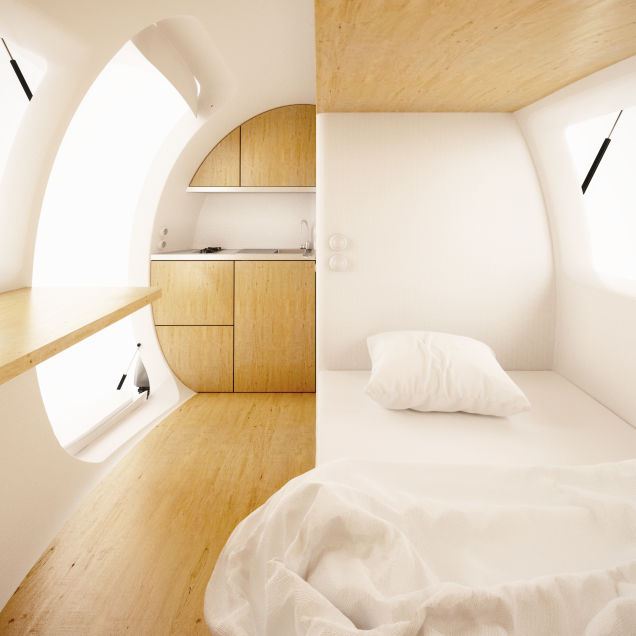
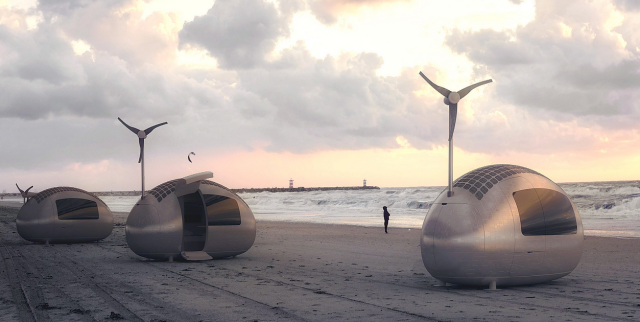
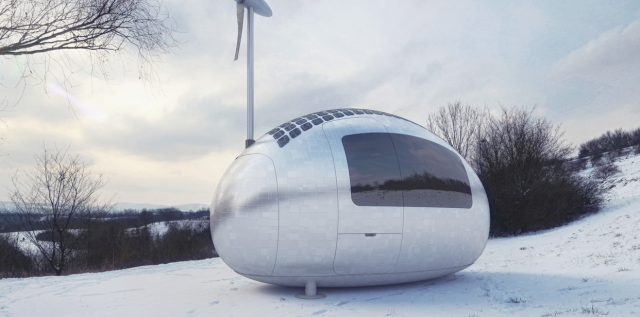
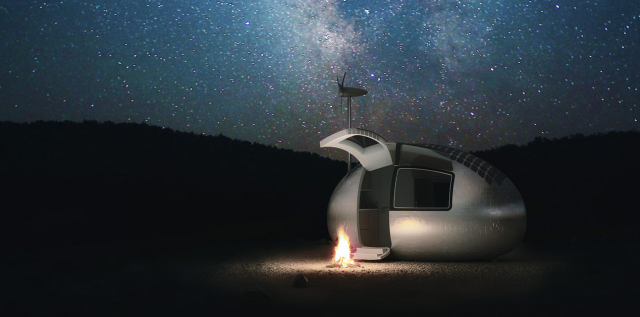
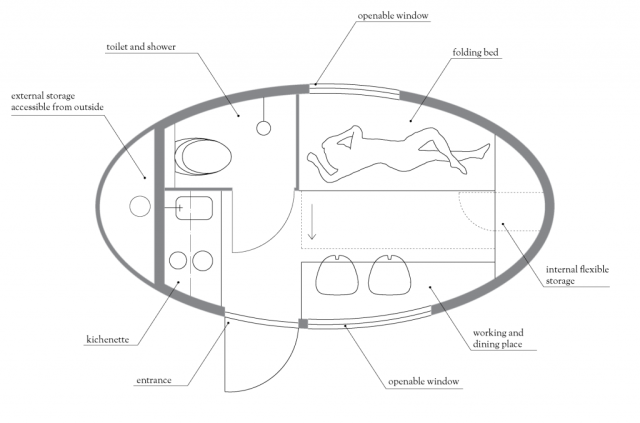
China: Recycled Concrete Houses 3D-Printed in 24 Hours
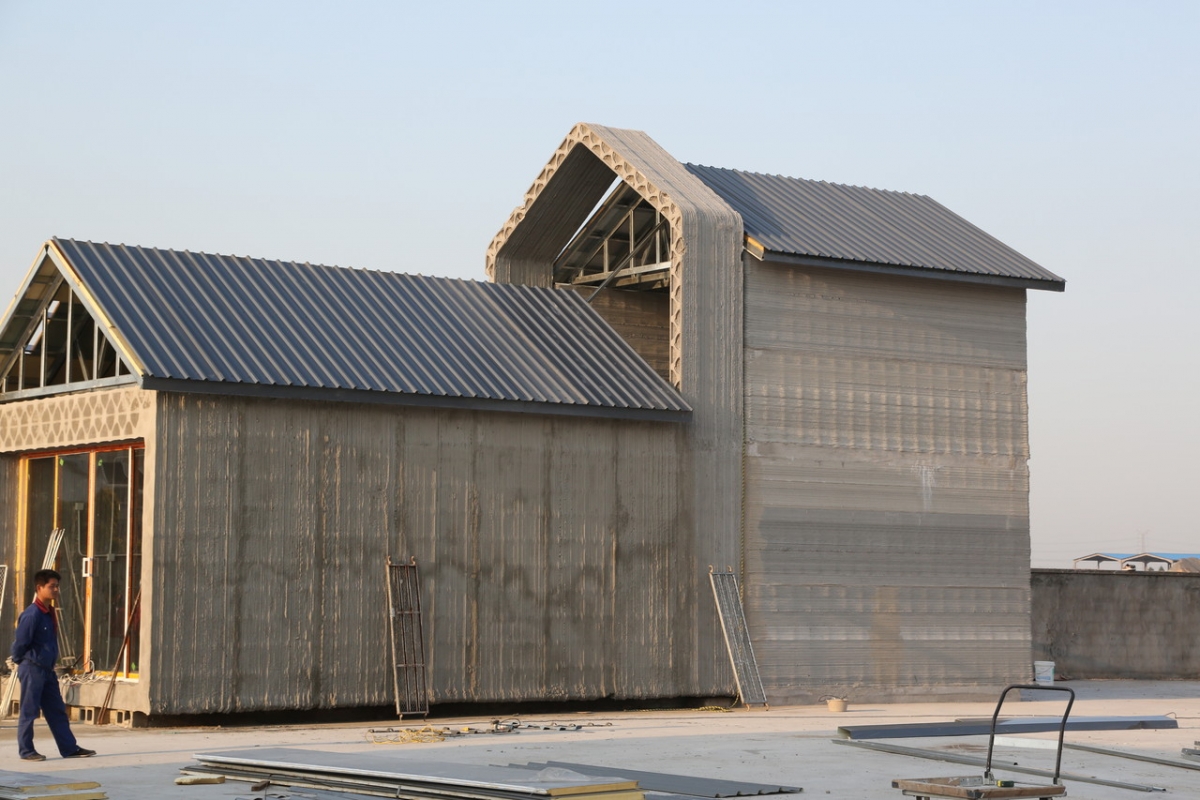
A Chinese construction firm based in Shanghai has succeeded in building 10 houses each measuring 200 square metres in 24 hours by using an enormous 3D printer.
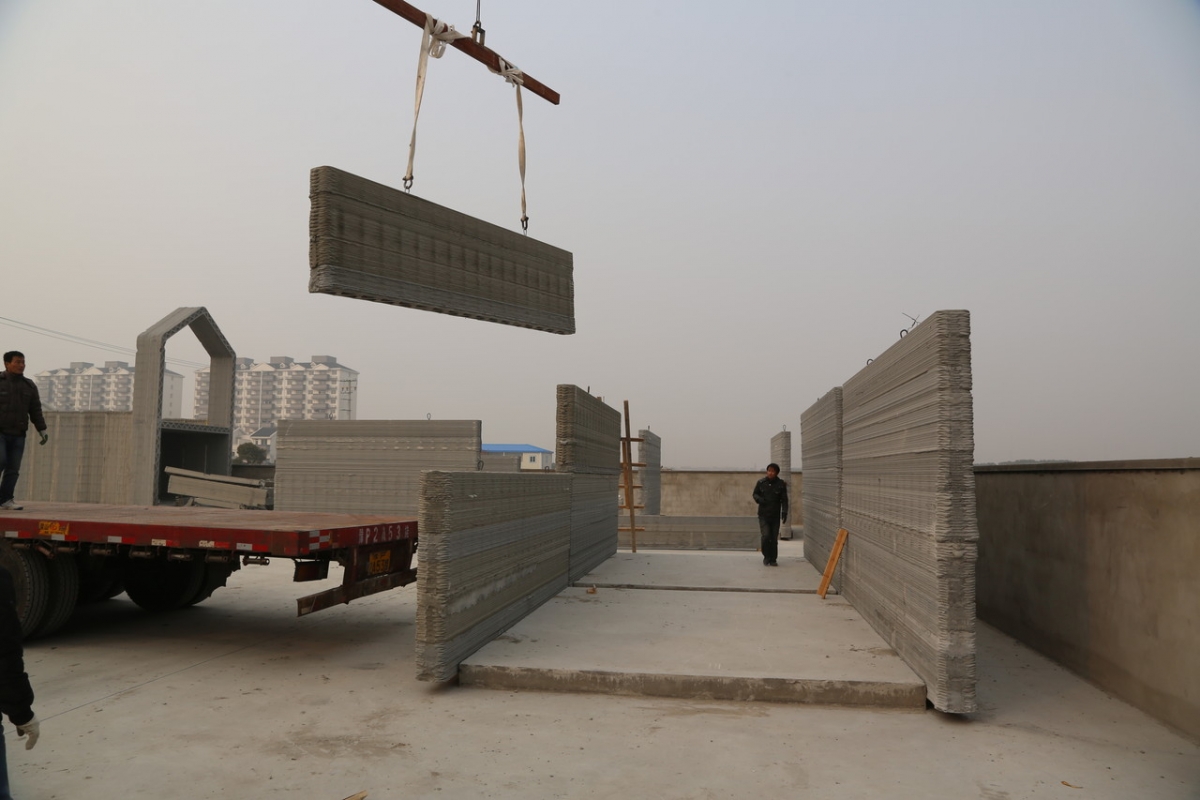
The houses are all eco-friendly and constructed from 3D-printed building blocks made from layers of recycled construction waste and glass fibre and mixed with cement.
Each home costs less than £3,000 to build.
WinSun Decoration Design Engineering spent 20 million Yuan (£1.9m) and 12 years to develop a 3D printer 6.6 metres tall, 10 metres wide and 150 metres long.
Large 3D printers have been in existence for several years and have been used to make plane parts and prototypes.
“We purchased parts for the printer overseas, and assembled the machine in a factory in Suzhou. Such a new type of 3D-printed structure is environment-friendly and cost-effective,” said the 3D-printer’s inventor, Winsun CEO Ma Yihe.
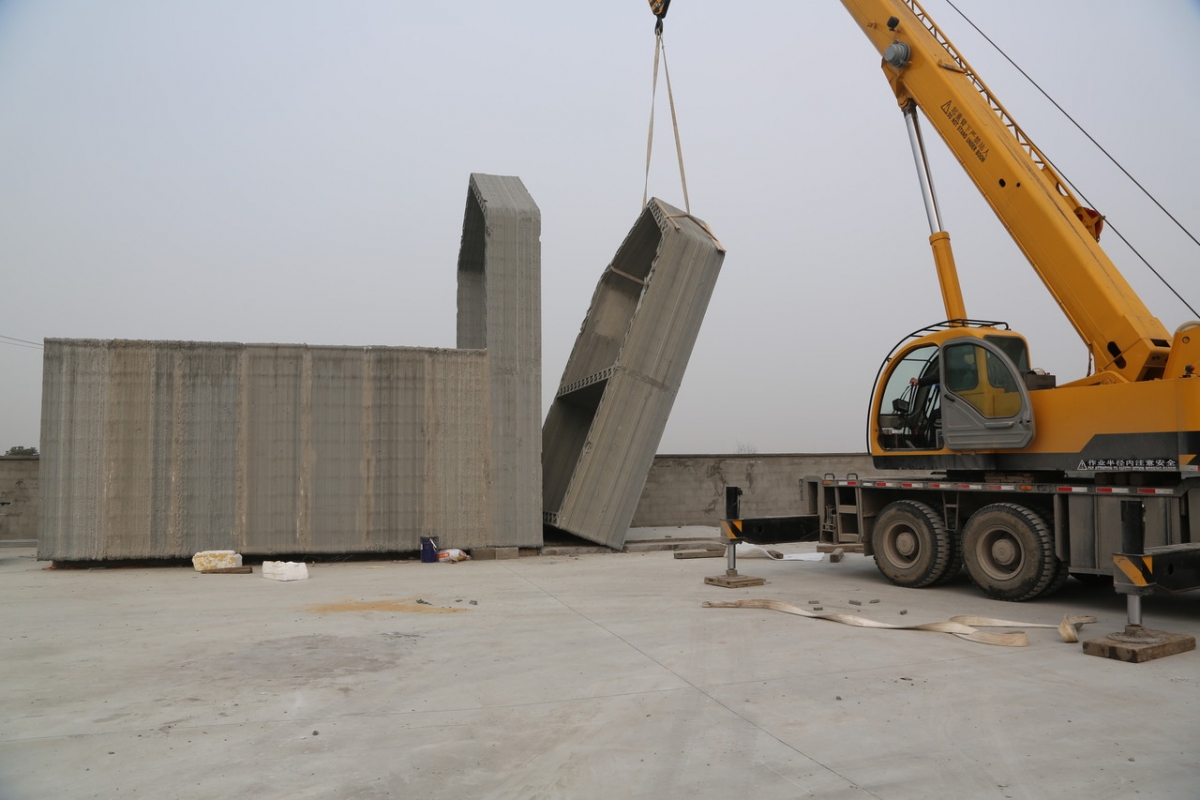
Winsun used architectural design software AutoCAD Architecture to not only plan the building but also to calculate tracing paths that took into account plumbing, electrical lining, insulation materials and windows, that would be added once the main structure was built.
The company holds 77 national patents for its construction materials.
Ma’s office building, which covers an area of 10,000 square metres, was also constructed with 3D-printed walls and took a month to build from an assembly line of four 3D printers.
“Industrial waste from demolished buildings is damaging our environment, but with 3D-printing, we are able to recycle construction waste and turn it into new building materials,” said Ma.
“This would create a much safer environment for construction workers and greatly reduce construction costs.”

Solar Lights Replacing Kerosene Lamps in Africa
As technology and resources start to reach more remote parts of the globe, we face a stark reality. Will the remote folks of Africa, Latin America and Asia follow in the same unsustainable footsteps as the West? Or will they be insightful enough to realize there must be a different way, one that preserves all life on this planet.
May 1st, 2015 by Aisha Abdelhamid
Using a unique business model to sell solar lights in rural African off-grid communities, SolarAid aims to eradicate the dangerous and toxic kerosene lamp from Africa by 2020. Working in Kenya, Malawi, Tanzania, Zambia, and Uganda, the lives of over 10 million people in Africa are being improved through solar technology.
Announcing another record-breaking year, SolarAid recently reported that its social enterprise, SunnyMoney, sold 624,468 solar lights last year, bringing its total distribution close to 1.7 million solar lights.
“The light has changed our life. My kids eat well, study well and we are a happy family now,” said Dickson Murumbi, a teacher in Kenya.
“The First and Most Crucial Step on the Energy Ladder”
“A clean, affordable and better source of light,” said SolarAid CEO Andrew Webb, “is the first and most crucial step on the energy ladder.” Webb continued, “The benefits to families, schools and communities is truly staggering and the fact that 10 million people in rural Africa, as we speak, are using these lights is testament to the hard work and dedication of our SunnyMoney teams.”
The total number of people across Africa now benefiting from solar light is estimated at around 50 million. As the largest seller and distributor on the continent, SunnyMoney solar lights account for one fifth of all sales. Webb pointed out, “The off-grid sector reaching 50 million people is fantastic, but there are over half a billion people in Africa still reliant on dangerous and very poor light sources like kerosene. In 2015, this is simply not acceptable. We need more support so that we can continue to give people across the continent the chance of a brighter future.”
The Dangers of Kerosene Lamps
Releasing black carbon into the environment, kerosene lamps pollute the air inside homes, resulting in health problems such as lung and eye diseases. Not only producing dim light which is inadequate for work or study, wounds and fatalities often result from the open flames of kerosene lamps.
In Uganda alone, the International Energy Agency estimates that 30 million people, or 80% of the population, live off the electrical grid. “Electricity is only available in the cities and main towns,” explained Alison Gallagher, SunnyMoney Uganda Operations Director. Gallagher added, “This forces families living off-grid to spend an average of USH 15,000 per month on kerosene for lighting.” Kerosene costs account for up to 25% of a family’s monthly income, and Gallagher pointed out that this money could be better used “to improve household nutrition, pay school fees or put towards new business opportunities.”
Across the African continent, it is further estimated that over 600 million people do not have access to electricity. With a total population of nearly one billion, it is reported that there are likely 100-200 million kerosene lamps damaging the health, polluting the air, and wasting the precious money of families in rural African off-grid communities. From my own personal experience as a resident of a rural community in Egypt, that number is vastly underestimated, as kerosene lamps represent the standard light source during the frequent power outages that we experience here.
SolarAid and SunnyMoney Shines in Africa
Based in London, SolarAid is an international charity that believes in business-based solutions to poverty and global warming. Creating a social enterprise called SunnyMoney in 2008, SolarAid relies on SunnyMoney to run its on-the-ground operations in African nations.
Testing and selecting the best solar lights and products from quality manufacturers, SunnyMoney began selling the solar lights in 2009. At that time the number of solar lights in use around Africa was estimated at fewer than 40,000. But by creating demand, solidifying markets, and bringing a commercially viable and scalable solution to this market, sales have begun growing all across the continent.
“We are product neutral which means we only sell lights that meet customer’s needs,” states the SunnyMoney website. “All of our lights exceed the Lighting Africa World Bank standards and come with a warranty. You can count on our SunnyMoney service guarantee of high-quality products with the best possible prices.”
The Benefits of Replacing Kerosene Lamps with Solar Lights
Replacing kerosene lamps with solar lights not only mitigates global warming – it also offers comfort to anxious mothers. “I don’t have any worries with the risk of the kerosene to spill and burn the house, because solar is easy to use and the children can put it on without me around,” reported Victoria Materu, a mother in Tanzania.
The benefits of one solar light include:
Through numbers and research offered by SolarAid, combined with research from the Global Off-Grid Lighting Association (GOGLA), the following figures highlight the benefits of replacing kerosene lamps with solar lights:
● Improving the lives of around 6 people
● Saving a family £130 (~$200)
● Enabling an extra 1200 hours of study
● Averting half a tonne of CO2
Furthermore, this research concludes the following, based on the lifetime of a solar light:
● 10 million people currently have access to a solar light
● 9 million of whom live below the World Bank $1.25 p/d poverty line
● Families will save £200 million (~$309.19M)
● 2 billion extra study hours will be created
● 900,000 tonnes of CO2 averted
● 6 million people experiencing better health from reduced indoor air pollution
● 1 million kerosene lamps packed away
“Using SunnyMoney solar lights,” reported Stanley Ruget, a Head Teacher in Kenya, “the school has improved from a mean score of 227 to 247. Most students use their solar light to study til midnight.”
Eradicating the Kerosene Lamp through Off-Grid Lighting
Placing a greater emphasis on knowledge sharing, SolarAid recently made a Clinton Global Initiative commitment to “build the alliance to eradicate the kerosene lamp.”
According to SolarAid, off-grid lighting is the most cost-effective way of contributing to the United Nation’s Sustainable Energy 4 All goal of universal energy access by 2030. The charity is currently advising a number of organizations on entering and supporting the off-grid lighting market, and is a leading member of the Global Off-Grid Lighting Association(GOGLA).
As of December, 2014, GOGLA estimates that around 7.52 million lights have been sold throughout Africa. Additionally, with the inclusion of home solar power systems and accessories, GOGLA estimates the off-grid solar market sector to be worth around $50 billion.
Improving Lives While Reducing Impact on the Planet
Following up with buyers of SunnyMoney solar lights, 90% of buyers interviewed had “immediately changed their main lighting method to solar soon after buying a solar light.” This same 90% were previously using kerosene lamps or candles. The 10% who did not change their main lighting method were purchasers who are connected to their national grid, and bought solar lights for a back-up source. 100% of the solar light users indicated that “having a solar light has generated income-earning opportunities.”
As SolarAid CEO Andrew Webb noted, “The growing off-grid solar market is a beautiful example of how we can reduce our impact on the planet and improve the lives of those living on it at the same time”.
Solar Plane Can Fly Forever! China to Hawaii – No Stop No Fuel
The Solar Plane has been criticized by many sceptics as an option far from reality. It doesn’t have enough power – we get it! However, the concept of the Solar Plane being able to fly indefinitely is something that raised our eyebrows here at Valhalla. Imagine the opportunities this can provide. McClatchyDC provided the story… …
Couple Creates Sustainable Off Grid Floating Island After 20 Years Of Work
 The floating fortress of sustainable living can be seen on the coast of Vancouver Island British Columbia. This masterpiece of hard work and effort just goes to show how amazing off grid living can be. Wayne Adams, 66, and Catherine King, 59, established this floating home together in 1992. They have been growing and fishing for their own food ever since they built the palace you see before you. I for one can admire all the stress and strain they probably had while building this grand abode.
The floating fortress of sustainable living can be seen on the coast of Vancouver Island British Columbia. This masterpiece of hard work and effort just goes to show how amazing off grid living can be. Wayne Adams, 66, and Catherine King, 59, established this floating home together in 1992. They have been growing and fishing for their own food ever since they built the palace you see before you. I for one can admire all the stress and strain they probably had while building this grand abode.
“Freedom Cove” consists of 12 floating platforms that include a dance floor, an art gallery, a guest lighthouse, a studio for Adams and King, and 5 greenhouses. All I can say is wow. The settlement has half an acre of land for growing edible crops. The couple gets water from a nearby waterfall during the summer and from rainwater during the winter. The settlement had been powered by an array of 14 solar panels, but recently switched to a generator after the panels broke down.
When they aren’t working on their sustainable lifestyle, they still manage to keep busy; during the summer, visitors come from nearby Tofino to experience the family’s sustainable lifestyle. Adams is also a carver, while King is a painter, dancer, writer and musician. This is a dynamic duo i desperately wish to meet. Check out their amazing work in these pictures below.
(h/t: boredpanda, browningpass, huffingtonpost)
Apple Purchases Land The Size Of San Francisco For Conservation And Is Building 2 New Solar Farms In China
We can’t help but be sceptical when we hear a mega-company like Apple announce it will do something in the greater interest of mankind. We know and have heard -as we’re sure you have too- that Apple is moving copious amounts of cash to parts of the world where they are exempt from tax. Could this be how they reconcile their ability to share and be human? (*note: Apple is not a human)
I (Lawrence) certainly won’t disagree, that the government who claims right to this taxable profit may be the worst people to give the money to in any case (it will be more money to mismanage). However, I would like to point out that Apple executives are, also, in no way qualified to claim the right to stewart the whole planet on our behalf, on the behalf of those living, dying and thriving in a given community. So here is an article written by True Activist, consider it.
Apple is contributing to a cleaner, healthier environment in quite a few ways.
Recently the maker of the iPhone and Mac computers announced that it has just purchased 36,000 acres of forest land for the express purpose of protecting it from future development, as well is already constructing two new solar farm projects in China. Their aim is to duplicate clean energy efforts abroad which have already been started in the United States.
The joint venture undertaken with SunPower will produce two new 20 megawatt solar farms. As stated above, construction in China has already begun, and 2 MW of solar capacity are already sending power to the grid. “The technology combines single-axis tracking technology with rows of parabolic mirrors, reflecting light onto high efficiency SunPower Maxeon cells, which are the world’s most efficient commercially available mass-produced solar cells. Completion of the projects is expected in the fourth quarter of 2015. […] The projects are expected to provide up to 80 million kilowatt-hours per year while also protecting the ecosystem.”
The super-technology company is contributing to a greener planet in more ways than one. To ensure that the packaging for its products comes from sustainable managed forests, it has partnered with The Conservation Fund to manage 36,000 acres of forest that have been purchased in Maine and North Carolina. As shared by Inhabitant, ‘The forests will be protected from development, staying forests forever, though some wood will be sustainable harvested from them.’
Said Larry Selzer, president and CEO of The Conservation Fund, “Apple is clearly leading by example – one that we hope others will follow.”

“By all accounts, the loss of America’s working forests is one of our nation’s greatest environmental challenges. The initiative announced today is precedent-setting,” said Selzer.
Apple’s efforts to preserve the environment have begun to change the tune of some of its critics, including Greenpeace. Said the non-profit’s USA Senior IT Sector Analyst Gary Cook, “Apple’s announcement today is a significant first step toward addressing its energy footprint in China, and sets an important precedent for other companies that have operations in China: they can take action to power their operations with renewable energy.”
In addition to their conservation plans in the States and abroad, Apple intends for its new headquarters in California to be 100 percent solar-powered by the time of its completion.
This is just one example of how successful businesses can reduce their environmental impact and help shape a greener, cleaner world.
.
Italian Spends 40 Years Building a Human-Powered Theme Park, It’s Amazing!

Bruno first began his journey to create one of the first human powered theme parks in Battaglia, Italy on June 15, 1969 with two jugs of wine, a bag of sausages and a grill. Two individuals walked by Bruno’s odd, but interesting display and asked, “What is this?” Bruno responded, “It’s a restaurant!”, and Ai Pioppi was born. The family run restaurant still operates to this day, even after 45 years later. The work that Bruno has created over the years to attract customers is phenomenal.Bruno began to build rides like: swings, slides, seesaws, gyroscopes and roller coasters all by his own two hands. Bruno, being the passionate builder that he is, hoped the rides would attract families and provide a memorable experience for the kids, who would in turn encourage their parents to return.The end game for Bruno and his park was fantastic. The spirit of adventure is definitely a bonus in this seemingly dangerous (but fun) place to be. This video allows you to see the masterpiece and hard work that Bruno has put into his park. I couldn’t help but be a little curious myself to actually believe how some of these rides work.
Ai Pioppi Rides
(Photos by: Alessandra and Oriol Ferrer Mesià)




If you Love a Tiny House, Then You’ll Really Love A Tiny Houseboat!
Have you ever wanted to just up and quit your job, build a boat, and travel the world? Sure, that might seem a little extreme, but maybe one day at least part of the package can come true.
Enter Roy Schreyer of Roy Designed That who designs and builds awesome things. His projects require a great deal of skill, but Roy shares his creations with the world, the hope being that others will give his designs and projects a try too.
That’s why when I came across his DIY tiny houseboat, I was super excited. I’ve always loved boats – there’s something very relaxing about being out on the water. Hours fly by and seem to stand still at the same time. But how cool would it be to have a little boat that you could cruise around in all day, and then instead of having to leave the boat behind at the dock, you can anchor it and spend the night right there. That sounds pretty cool to me.
Roy Schreyer has many designs, but this one is by far my favorite.

It’s a tiny houseboat. The structure was built with minimalist principles to make the best use out of space. 
One of the benefits of the boat’s size is that you can anchor it almost anywhere! Take off for a weekend or just cruise around the lake for an afternoon.
It’s actually a lot roomier on the inside than you’d think. With this set up, there’s enough space for several people to sit comfortably.
The seating area can also be converted into a bedroom. I can just imagine falling asleep to the sound of the waves against the boat.  RoyDesignedThat
RoyDesignedThat
The steering column is an old-fashioned wooden wheel with spokes that hearken back to the days of tall ships.
The inside is surrounded by windows so everyone is guaranteed a good view.
It wouldn’t be a Tiny Houseboat without a space for the most important time of the day – mealtime! In addition to a seating area and a bedroom, the cabin can also be converted into a dining room.
You can dock this little guy anywhere, including a sandbar for an afternoon picnic.
Here’s a video of the Tiny Houseboat in action:
Original source: viralnova
20-Year-Olds Turn Van Into A Mobile Laundromat To Wash Clothes For The Homeless
Realizing not enough is being done to meet homeless peoples’ hygienic needs, these two friends put an ingenious idea to work and are now helping many people in Australia.
Sometimes the best thing you can do to help others is to assist them with the little things, which – believe it or not – make a great deal of difference.
Imagine being homeless and trying to get back on your feet – yet feeling extremely self-conscious of the state of your clothes when seeking out new opportunities. The two definitely don’t mix, which is why two good-Samaritan friends created a brilliant way to help the homeless re-gain confidence and also feel more optimistic about their situation. They did this by turning their van into a mobile laundromat to give those without an opportunity to wash their clothes safely.
The two creators of the Orange Sky Laundry project, Lucas Patchett and Nicholas Marchesi, began with an old van and a generator. With the support of donations, they were able to secure two washing machines and driers, and now their van can process 20 kg of laundry an hour.
Launched in July, the project is now in its trial period, during which the van will operate 5 days per week in Brisbane, Australia. If all goes well, the organization will likely spread across Australia.
Two 20-year-old friends, Lucas Patchett and Nicholas Marchesi, noticed that not enough was being done to help the homeless or meet their hygienic needs.  So they created Australia’s FIRST mobile laundry unit for the homeless. Now they spend 5 days a week helping others regain a bit more self confidence and live more comfortably by washing their clothes.
So they created Australia’s FIRST mobile laundry unit for the homeless. Now they spend 5 days a week helping others regain a bit more self confidence and live more comfortably by washing their clothes.  [Clean clothes are] “a privilege that so many of us take for granted. This is the first time Mich has been able to wash his clothes and blankets. Born in Brisbane and living on the streets, Mick can’t afford to wash his clothes or transport them. Thanks for your continued support of our program.”
[Clean clothes are] “a privilege that so many of us take for granted. This is the first time Mich has been able to wash his clothes and blankets. Born in Brisbane and living on the streets, Mick can’t afford to wash his clothes or transport them. Thanks for your continued support of our program.”  And as shared on the Orange Sky Laundry website, “Meet Ricky. He wants to thank you all for your donations and support. He sleeps rough on the street with his dad and today they were able to wash all their clothes.”
And as shared on the Orange Sky Laundry website, “Meet Ricky. He wants to thank you all for your donations and support. He sleeps rough on the street with his dad and today they were able to wash all their clothes.”  Lucas Pratchett poses in front of one of the vans.
Lucas Pratchett poses in front of one of the vans.  This organization runs off the generosity of others around the globe. You can help by donating online – $6 will cover the cost of a cycle of washing for one person. “Have a look, we really appreciate it along with your continued support.”
This organization runs off the generosity of others around the globe. You can help by donating online – $6 will cover the cost of a cycle of washing for one person. “Have a look, we really appreciate it along with your continued support.”  Source: HuffingtonPost
Source: HuffingtonPost
Written by Amanda Froelich of www.trueactivist.com
Designer Creates Amazing Billboards that Can House the Homeless

Slovakian firm Design Develop has come up with an innovative solution to provide shelter for the homeless: billboards. Project Gregory is a compact, triangular dwelling that could be funded in part by the proceeds of selling advertising space on its exterior walls.
Homelessness is a complex global issue, and finding solutions involves the coordination of many fields and services. Project Gregory seeks to provide alternative dwellings for the homeless that double as billboards and advertising spaces. Billboards are expensive to install, maintain and rent, and Project Gregory optimizes the structures so that they can double as living spaces.
To fit out the structure, the billboard dimensions are preserved, and a set of steps are added. The interior floor plan is informed by the resulting triangular shape. The interior is divided into two rooms, the first containing an entrance hall, a kitchen with a small office desk, and a raised bed set above a storage space. The second room contains the bathroom, with a washbasin located over a wardrobe, a toilet, and a shower corner. The structure consists of a wood frame with a concrete base, with impregnated OSB board facing, wooden or steel stairs, and two windows.
Project Gregory is designed for the city of Banska Bystrica, Slovakia, where the project would be easy to implement thanks to existing energy and water grids. The designers believe the billboard housing project could be applied elsewhere though, as long as adequate study and consultation was carried out beforehand. The project would be funded by firms and investors that could help with construction or acquire long-term rental of the advertising space. The Project Gregory website states that it is a nonprofit platform and is freely available for cities to implement free of charge. It’s designed as an “open source” project, so architects, designers, and artists can build upon it to create new designs and layouts.
Source: Inhabitat
Photos by: Project Gregory

